Status of key summer fallow weeds in the Riverina an update
Status of key summer fallow weeds in the Riverina an update
Author: Leslie A. Weston, William Brown, Shamsul Haque and John Broster (Graham Centre for Agricultural Innovation, Charles Sturt University, Wagga Wagga, NSW 2678) | Date: 16 Feb 2016
Background
Recent survey results conducted from random field-based surveys throughout Victoria (VIC) and New South Wales (NSW) have shown a marked increase in the prevalence of certain summer annual weeds across this region (Broster, personal communication). The diverse range of species that most frequently dominates fallow crop fields is a function of the type of crop residue or fallow, the soil type and characteristics including drainage and pH, residual fertility, infestations in neighbouring paddocks and seasonal rainfall events.
Conservation tillage (CT) is a system of residue management that avoids the use of cultivation or tillage for establishment of annual broadacre crops. This system maintains crop residues on the soil surface and minimises soil disturbance over time. It has several advantages in that its implementation generally results in reduced soil erosion due to wind and water, reduced operational expenses associated with cultivation or tillage, and conservation of water. Use of CT, also known as stubble tillage, may impact weed establishment, both during the cropping phase and post-harvest in the fallow phase (Liebl et al. 1992, Scott et al. 2010, Weston 1990). With CT, emphasis is placed on the use of herbicides for both pre- and post-emergent weed management in the remaining stubble, rather than cultivation, potentially leading to increased herbicide resistance in weeds of broadacre crops including annual ryegrass, wild radish and wild oats (Scott et al. 2010).
Much experimentation has been performed in the USA, Europe, Australia and South America to document the impacts of CT upon crop yield and performance. However, less information is generally available about the longer term impacts of stubble residues upon weed seedbank dynamics and weed infestation, following the adoption of CT systems in Australian cereal and grain crops. One of the most notable changes following the use of CT is upon weed management because pre-plant tillage and cultivation do not occur (Liebman and Davis 2002). The adoption of CT in the USA has been reported by many investigators to result in increased numbers of annual grasses and perennial broadleaf weeds, and decreases in annual broadleaf weeds over time (Liebl et al. 1992).
Although numerous international studies and those performed in Western Australia (WA) and South Australia (SA) have shown increases in crop yields over time associated with stubble retention, other studies have shown reductions in crop yields in CT systems, particularly in high rainfall years (Scott et al. 2010). This may be associated with the presence of decomposing mulch and release of allelochemicals, nutrient unavailability, increases in soil-borne pathogens or unfavourable shifts in weed spectrum over time due to use of CT. To reduce key weeds associated with production of broadacre crops by CT, some NSW producers have reverted to burning of stubble and use of tillage. In contrast, if stubbles are allowed to remain on the soil surface, researchers have reported issues with stubble build-up leading to poor seed/soil contact in future seeding events, and increased numbers of grass weeds associated with the presence of these residues (Scott et al. 2010).
Summer fallow weed management is of increasing importance in recent years due to the presence of crop residues and lack of tillage events, as well as the lack of sheep grazing the stubble after significant rainfall events. Farming systems in the Central West Region have continued to evolve over the past decade. The general trend has been a reduction in tillage or complete removal of it. During the past 10 years, there has been a shift to also removing grazing stock from cropping paddocks. This has meant that many paddocks are reliant on glyphosate-based herbicide applications for summer weed control (Street, 2011).
Furthermore, some summer weeds are either tolerant or even resistant to the use of glyphosate, and current tank mix partners may have no efficacy on grass weeds. In the case of windmill grass and Feathertop Rhodes grass, certain biotypes have been seen to thrive when effective control measures are not available due to herbicide resistance in the case of windmill grass or tolerance in the case of Feathertop Rhodes grass. Windmill grass and other grass species have therefore increased in prevalence when competition for resources in fallow fields or pastures remains unchecked. Selected populations of fleabane and windmill grass have recently been identified as herbicide resistant (Preston, 2010; Street 2011). Therefore, the continued survey and correct identification of prevalent summer fallow weeds are increasingly important, as we strive to find more efficacious methods for weed management throughout the year. This paper will describe key weeds emerging in summer fallows in this region, methods to identify them, and information on their biology and lifecycle and efficacious management.
There are several current research studies that have included the use of surveys to obtain an on-going status of emerging summer annual weeds. The survey in Table 1 was produced by John Broster and associates at Charles Sturt University (CSU) and represents survey results from random crop paddocks from Western Plains through the Riverina districts for summer annual weeds. Other related ongoing surveys have been performed routinely across VIC, Tasmania (TAS), SA, Queensland (QLD) and WA.
Summer weed survey information
Table 1: Weed survey results from random paddock sampling in the regions from Western Plains through the Riverina districts (summer annual weeds only).
| Weed | Total | % of pdks |
|---|---|---|
| Feathertop Rhodes | 7 | 6% |
| Fleabane | 41 | 33% |
| Witchgrass | 26 | 29% |
| Wild Melons | 13 | 10% |
| Windmill Grass | 36 | 29% |
Results on abundance of summer fallow weeds were taken from 123 paddocks visited of which 74 paddocks had weeds mature enough to collect plant/seed samples. In Table 1, it is evident that flaxleaf fleabane (Conyza bonariensis) is most prevalent, followed by witchgrass (Panicum capillare) and windmill grass (Chloris truncata), wild melons including prickly paddy (Cucumis myriocarpus) and camel melon (Citrullus lanatus var. citroides) and finally, Feathertop Rhodes grass (Chloris virgata). All of these species are summer annuals with the exception of windmill grass which is perennial.
Feathertop Rhodes grass is a tufted annual grass up to 1m tall with erect and semi-prostrate branched stems capable of rooting at the joints. Leaf blades are bluish green, 5cm to 25cm long and 3mm to 6mm wide. The seed-heads or panicles have seven to 19 feathery, white-silver spikes that are 3mm to 9mm long. The feathery appearance comes from the stiff white hairs and awns arising from the seeds. See more here. Factors impacting the spread of Feathertop Rhodes grass include tolerance to glyphosate, as well as the ability to germinate readily when seeds are located on the soil surface.
Flaxleaf fleabane is an annual species present in cropping paddocks, pastures and roadsides which is often difficult to control, particularly after it has achieved some size and growth, given its deep taproot. It is an erect and upright annual with small daisylike flowers. It grows up to 1m in height and has multiple branching stems covered with stiff hairs and grey-green leaves that are deeply indented and coarsely toothed (Northern Integrated Weed Management (IWM) fact sheet, Walker et al.). It is also resistant in some cases to glyphosate application but when larger, can be difficult to control as well, even with tank mixes and double knocks. There are seven species of fleabane present across Australia, but this is the most common of the species in this region. It also germinates well when seeds are present on or near the soil surface. It tends to become more prevalent in our regions following long periods of higher moisture availability.
Witchgrass (Panicum capillare) is often confused with hairy panic (Panicum effusum), a native grass of Australia. In fact, most of the panic grass across this region is considered to be witchgrass but there are numerous other panicum species as well. They can be associated with livestock poisoning or toxicity when ingested (Quinn et al. 2014). It is also known as fairy grass. Witchgrass is native to North America and was likely introduced as a seed contaminant. Witchgrass is a rapidly germinating summer annual grass with hairy leaves and forms a panicle that is easily transported when mature by wind or animal movement, often piling up by fence rows, houses and roadside barriers. Paddocks which contain 50 per cent or more of the native hairy panic grass may be subject to provisions of the native vegetation act, as such spraying for management may be restricted, so identification of this plant versus the invasive witchgrass is critical. Witchgrass is also known to cause photosensitisation to grazing sheep (Phillips, 2010; Quinn et al. 2014). However, it is relatively easy to control with the application of selective or non-selective herbicides.
Windmill grass, sometimes referred to as umbrella grass or blowaway grass, is one of 14 Chloris species in Australia, nine of which are found across NSW (Wheeler, 1982). Windmill grass has generally increased its prominence in cropping paddocks in recent years, especially in zero tillage systems. However, it is a species that has been present in the local area for more than 20 years (Street unpublished). Past trial work in WA has shown that it can cause yield penalties of 0.3t/ha in wheat (Borger, 2009) and in the Central West NSW it has resulted in yield penalties of over 50 per cent (Street unpublished). Windmill grass is often very difficult to control with herbicides as well, due to its tolerance to these products and in some cases, resistance to glyphosate.
Wild melons are important newly emerging species of significance across cropping fields and pastures in southern and WA (Shaik et al. 2012, 2015). The species of wild melons are also often confused, however they are relatively easy to distinguish once mature fruit are formed. Camel melon is an annual vine as is prickly paddy melon with leaves similar to that of the cultivated watermelon. Flowers are cross pollinated by bees or other insects and seeds were thought to be imported from Africa by way of India with the first camels coming to Australia in the mid-1800s. Both species are resistant to drought and germinate continually during warm summer months, when rainfall is significant. The seeds are large and generally white, tan or brown and can be eaten by local birds and grazing livestock. The fruit is bitter and generally not consumed by livestock but can be toxic if consumed. Seed is often dormant and exhibits after-ripening and cyclical dormancy for a period of up to one year following formation. The fruit of prickly paddy melon is smaller and round (up to 2-3cm in diameter with multiple prickles), whereas the fruit of camel melon is round or oblong and smooth, with stripes or spots in some cases and up to 12cm in diameter or more at maturity. Both of these melons can be controlled with tank mixes of phenoxy-based herbicides and/or glyphosate, but the deep tap root and extensive fibrous rooting system require that application be made after a rainfall event to ensure good translocation when plants are turgid (Shaik et al. 2012, 2015). Both species are represented by mainly a single haplotype in Australia and are genetically impoverished, but still highly invasive with a single plant producing many fruit and thousands of viable seeds per plant.
Germination depth of windmill grass, Feathertop Rhodes Grass and fleabane
In 2013, greenhouse trials were set up at the Wagga Wagga Agricultural Institute (Wagga Wagga NSW) to investigate the soil depths at which three different weed species exhibit optimal germination and establishment after seed burial.
Methodology
Flaxleaf fleabane (Conzya bonariensis), windmill grass (Chloris truncata) and Feathertop Rhodes grass (Chloris virgata) seeds were planted into pots at four different soil depths (0, 1, 2, 4cm). Pots were filled with river sand and topped with a mixture of 50/50 river sand and potting mix.
Seeds (200/pot) were placed at the appropriate soil depth. Pots were maintained under standard greenhouse conditions (20-28oC daily temperatures) and watered as required to encourage germination. Treatments were replicated four times and data on germination and establishment were collected on a weekly basis by removing established seedlings until no further germination was noted.
After completing Trial 1 for all three species, a second trial was established to study deeper plant depths for windmill grass and Feathertop Rhodes grass. This experiment was performed as described above (Trial 2), except the planting depth was altered to 2, 4, 6 and 10cm.
Data were analysed using the Agricultural Research Manager Statistical package (Gylling Data Management, ARM Version 9, USA).

Figure 1: Weed seed germination depth trial 1.
Seedling counts (Figure 1) show that windmill grass had an emergence profile that ranged from 0-4cm but optimal germination/establishment was observed at 0-1cm planting depth. Bars accompanied by the same letter are not significantly different as determined by LSD (0.05) test.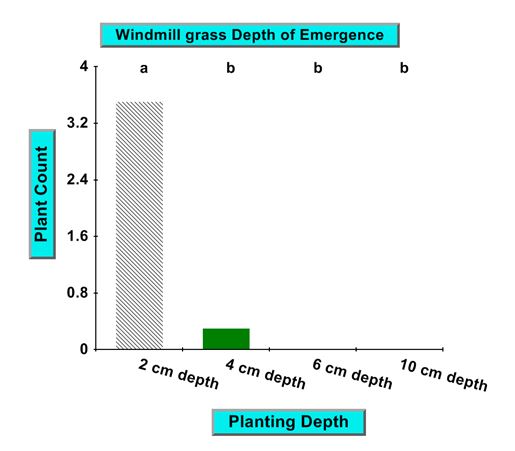
Figure 2: Weed seed germination depth trial 2.
Seedling counts (Figure 2) show that no windmill grass plants emerged at the 6-10cm planting depth, in contrast to shallower planting depths.
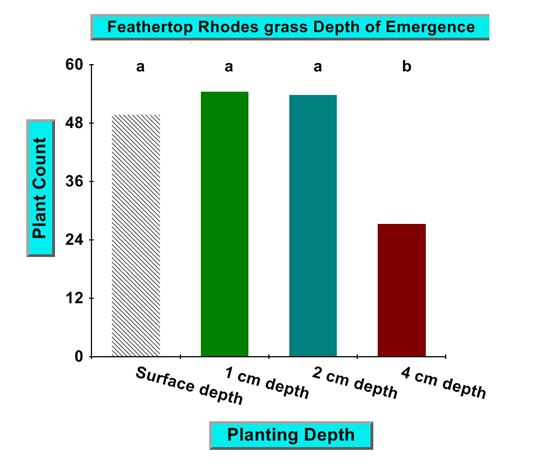
Figure 3: Weed seed germination depth trial 3.
Seedling counts (Figure 3) show that Feathertop Rhodes grass had an emergence profile that ranged from 0-4cm but optimal germination/establishment was observed at 0-2cm planting depth.
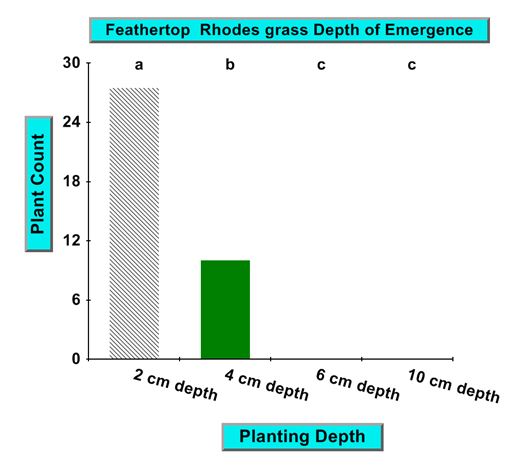
Figure 4: Weed seed germination depth trial 4.
Seedling counts (Figure 4) show that no Feathertop Rhodes grass plants emerged at the 6-10cm planting depth, in contrast to shallower planting depths.
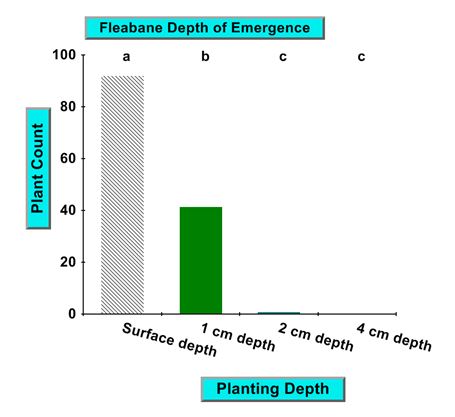
Figure 5: Weed seed germination depth trial 5.
Flaxleaf fleabane (Figure 5) had an emergence profile that ranged from 0 to 1cm, showing that shallow depths resulted in optimal germination and establishment. Any depth beyond 2cm did not result in emergence of fleabane plants.
The results of these greenhouse ‘Depth of Emergence’ trials indicate that shallow seeding depths or surface placement of seeds are optimal for enhanced germination and establishment of all three species, suggesting that the recent increased populations and geographic spread of these weed species in reduced or no-tillage systems is not unexpected, as they exhibit greater emergence on the soil surface or with shallow burial, as encountered in no-tillage systems. Chances of survival and germination are greatly increased if seed propagules remain close to the soil surface.
Biology and distribution of summer annuals in Australia
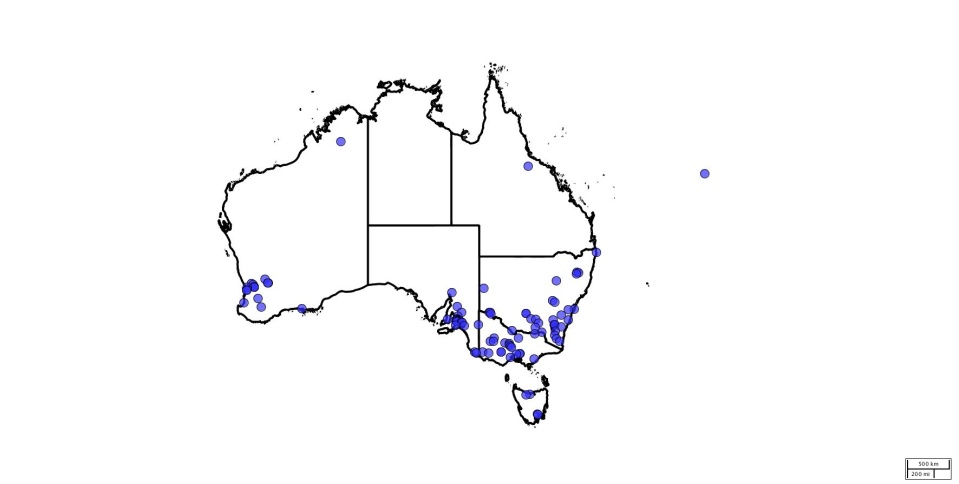
Figure 6: Distribution of witchgrass in Australia, an introduced species.
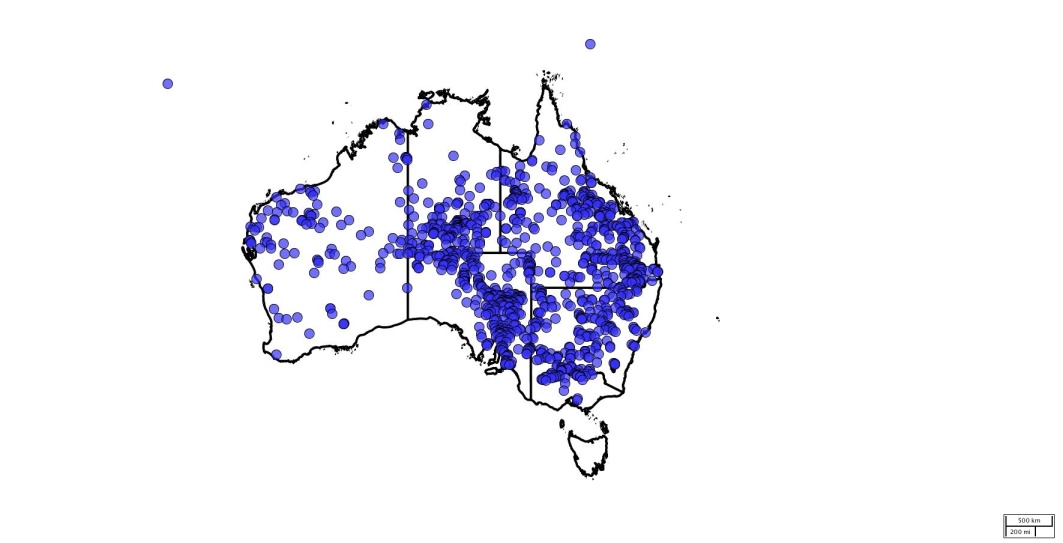
Figure 7: Distribution of windmill grass in Australia.
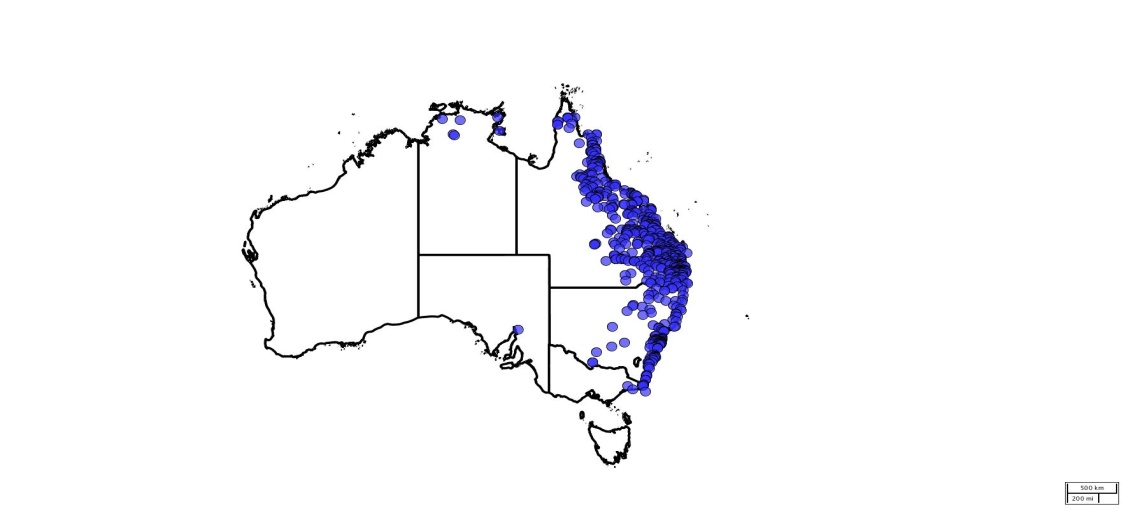
Figure 8: Distribution of hairy panic grass in Australia, a native species.
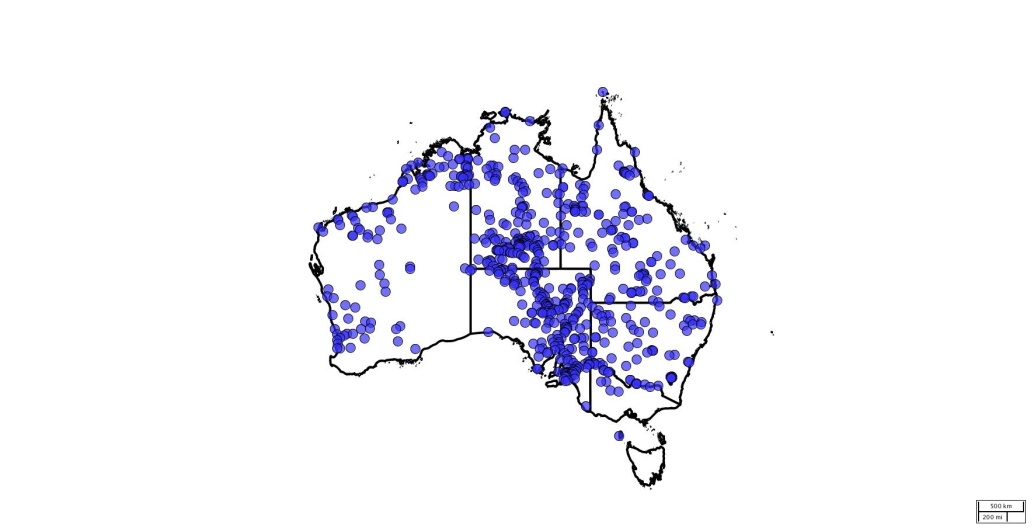
Figure 9: Distribution of camel melon in Australia.
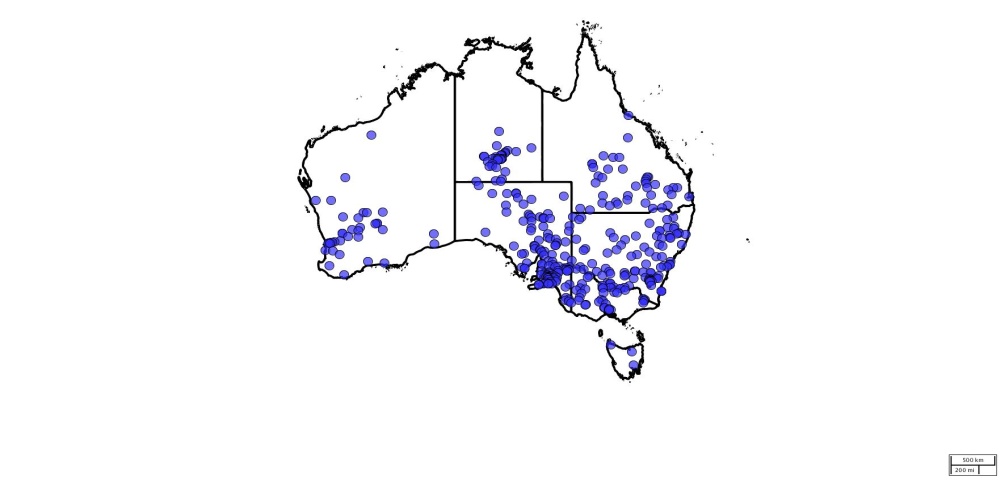
Figure 10: Distribution of prickly paddy melon in Australia.
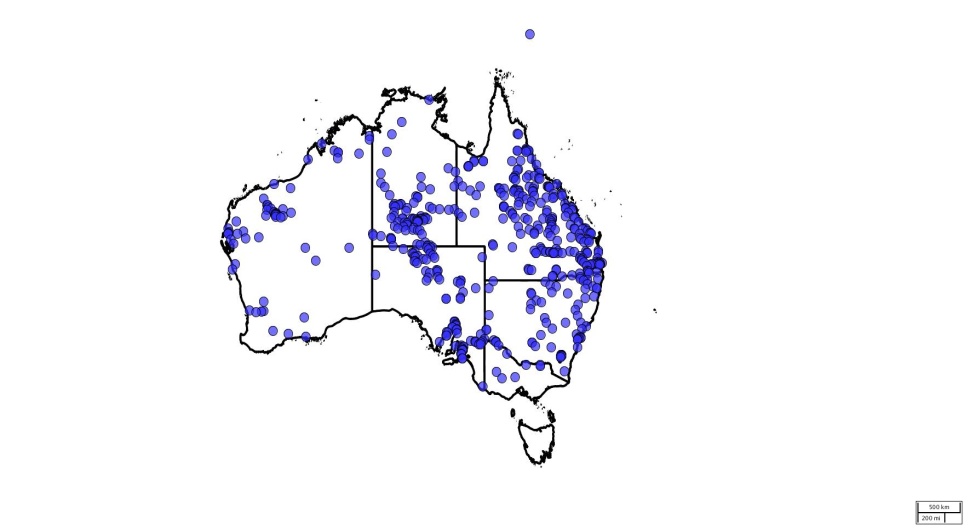
Figure 11: Distribution of Feathertop Rhodes grass in Australia.
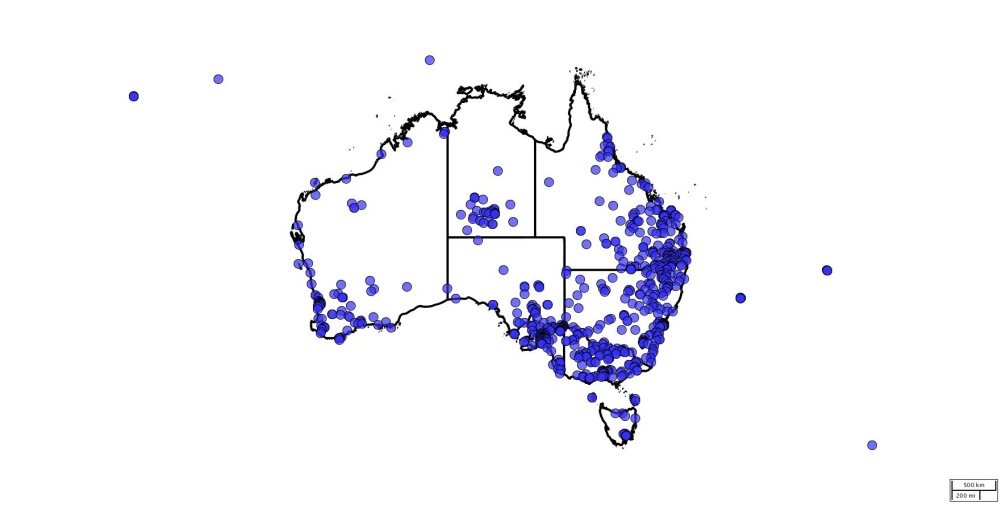
Figure 12: Distribution of fleabane in Australia.
Conclusions
New and emerging summer fallow weeds of importance can cost producers considerable dollars in summer fallow weed management costs. Tillage or soil disturbance can result in reduced establishment of many of these species. They typically germinate in warm summer months in response to rainfall events. Many of them are not dormant but some, such as wild melons, exhibit cyclical dormancy at seed maturity. A combination of IWM practices and chemical control strategies will result in reductions of summer fallow weeds and also reduce inputs into the weed seedbank over time. Establishment of these species can cause considerable losses in summer crop yields, livestock health and/or reductions in soil moisture. Their spread can be limited by careful management coupled with correct identification.
Acknowledgement
Funding for this work was provided through the GRDC Project UA0134, UCS00200 and their support gratefully acknowledged.
Useful resources and references:
GRDC Factsheet. Feathertop Rhodes grass. Integrated weed management manual (2014).
Liebl, R., Simmons, F.W., Wax, L.M. and Stoller, E.W. (1992). Effect of rye (Secale cereal) mulch on weed control and soil moisture in soybean (Glycine max). Weed Technology 6, 838-46.
Liebman, M. and Davis, A.S. (2002). Integration of soil, crop and weed management in low-external-input farming systems. Weed Research 40, 27-47.
Phillips, N. (2010). There’s no panic – it’s a witch hunt! Agriculture Today. June 2010.
Putnam, A.R., DeFrank, J. and Barnes, J.P. (1983). Exploitation of allelopathy for weed control in annual and perennial cropping systems. Journal of Chemical Ecology 9, 1001-12.
Scott, B.J., Eberbach, P.L., Evans, J. and Wade L.J. (2010). Stubble retention in cropping systems in Southern Australia: benefits and challenges. Graham Centre Monograph Series. No. 1. Wagga Wagga Australia.
Shaik, R.S., D. Gopurenko, G.E. Burrows, N.A.R. Urwin, B.J. Lepschi, S.M. Hildebrand and L.A. Weston. (2012). Identification of the invasive weeds, camel melon, prickly paddy melon and colocynth in Australia – a morphological and molecular approach Proc. 18th Australasian Weed Sci. Soc. pp. 73-77.
Shaik, R. S., D. Gopurenko, N. A. R. Urwin, G. E. Burrows, B. J. Lepschi and L. A. Weston. (2015). Population genetics of invasive Citrullus lanatus, Citrullus colocynthis and Cucumis myriocarpus (Cucurbitaceae) in Australia: inferences based on chloroplast and nuclear gene sequencing. Biological Invasions: 17(8). DOI:10.1007/s10530-015-0891-6.
Siemens, D.H., Garner, S.H., Mitchell-Olds, T. and Callaway, R.M. (2002). Cost of defense in the context of plant competition: Brassica rapa may grow and defend. Ecology 83, 505-17.
Street, M. (2011). Windmill grass (Chloris truncata), the current state of play. GRDC Weed Updates.
Walker, et al. (2012). Northern IWM Fact Sheet. Flaxleaf fleabane – a weed best management guide. Northern IWM fact sheet
Weston, L.A. (1990). Cover crop and herbicide influence on row crop seedling establishment in no-tillage culture. Weed Science 38, 166-71.
Weston, L.A. (2005). History and current trends in the use of allelopathy for weed management. Horticultural Science 15, 529-34.
Weston, L.A. and Duke, S.O. (2003). Weed and crop allelopathy. Critical Reviews in Plant Sciences 22, 367-89.
Contact details
Leslie A Weston
Graham Centre for Agricultural Innovation
Charles Sturt University, Wagga Wagga NSW 2678
leweston@csu.edu.au
John Broster
jbroster@csu.edu.au
